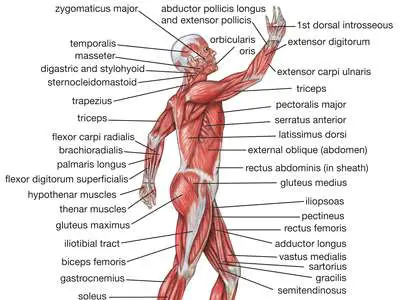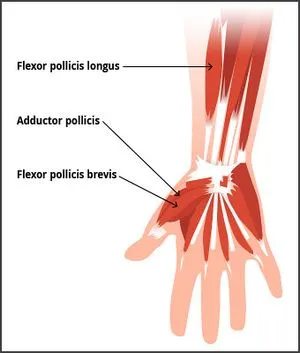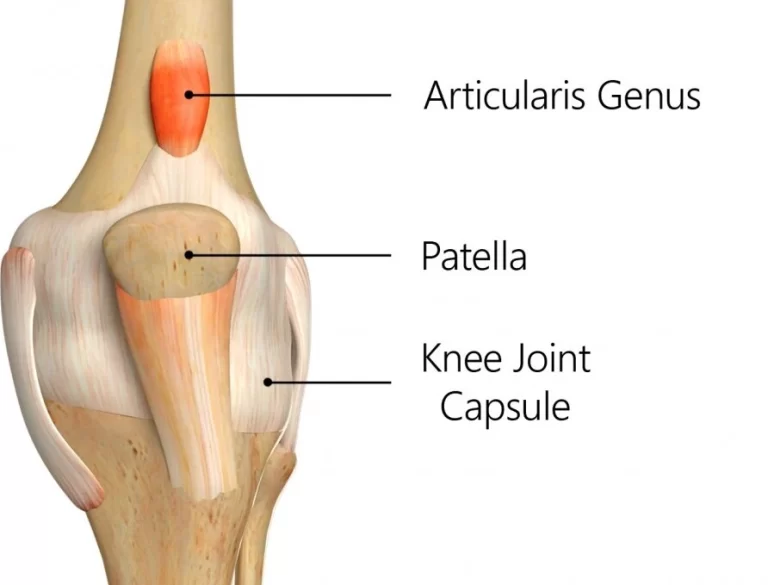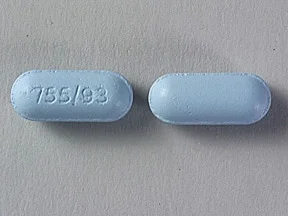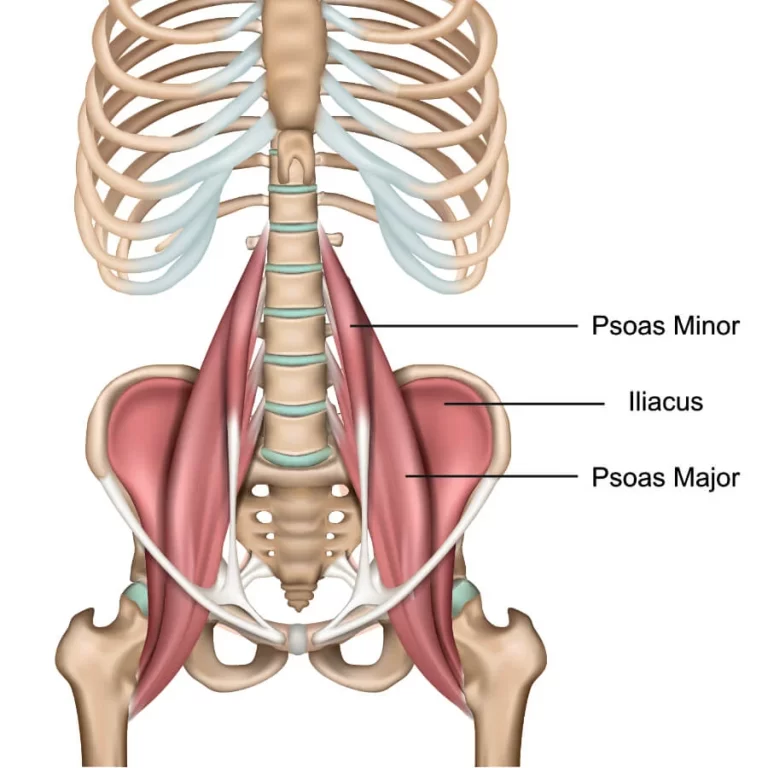Muscular System: Characteristics, Types, and Functions
The Human Muscular System
The human body is made up of various systems, including circulatory, nervous, excretory, digestive, etc. One such system is the muscular system of the body. The muscular system is a part of the locomotor system, which comprises muscles, bones, tendons, ligaments, and a whole lot more.
The human body is composed roughly of 600 muscles, which all together help our body to move about. In conjunction with the skeletal system, muscles help the body to move to and fro, not only in space but also internally.
What is a Muscle?
The muscle can be defined as a contractile tissue that brings about the movement of organs and the body as a whole. In other words, the muscle is a tissue that has the ability to contract and relax. And because of this, they are responsible for bringing out mobility inside the body, and of the body as a whole. They are also identified as motors of the body.
Fun Fact – The word muscle is derived from the Latin word Mus, meaning mouse cause the majority of the muscles were considered to resemble a mouse with tendons as the tail.
Characteristics of a Typical Muscle
Though there are different types of muscle fibers, there are a few basic properties that are true to any muscle present inside the human body. These include,
- Irritability, i.e. any muscle present in a live human body is sensitive to stimuli. That there is a certain trigger that can affect the muscles at any given moment.
- Contractility, i.e. when and if stimulated, the muscles generate the excitation-contraction coupling process causing the muscle to shorten along its length. For example, when you flex your elbow, the biceps muscle undergoes contraction leading to its shortening.
- Extensibility, i.e. when the stimulus is removed, the muscle regains its original shape and size. For example, when you straighten out your elbow, the contracted biceps muscle now regains its original shape and size.
- Elasticity, i.e. the muscles always assume the desired shape despite the stress or stretch force over it. In other words, No matter the force on the muscle, once it is removed, the muscle regains its original shape. Stretching or moving the muscles beyond their potential is not possible and might result in injuries.
Types of muscle tissue
Generally, there are three main types of muscle tissue found in the body. Namely, smooth muscle, cardiac muscle, and skeletal muscle.
Smooth Muscle
- They are also called non-striated muscles because they show no cross stripes or presence of sarcomeres under microscopic examination.
- These muscles contract on their own, i.e. without the need for any external stimuli.
- Hence, they are called involuntary muscles, the muscles which we cannot control with our brain.
- They constitute the inner lining of all of the hollow internal organs, including the stomach, intestines, uterus, esophagus, urogenital tract, urinary bladder, blood vessels, iris of the eye, etc.
- The fibers of these muscles are unbranched and are spindle-shaped with one nucleus in the center.
- The fibers are bounded by plasmalemma.
- The fibers are devoid of any light or dark bands and have no intercalated disc.
- The smooth muscle receives poor blood supply under the autonomic nervous system.
- The main functions of this involuntary muscle include movement of the viscera or the internal movements of the body.
Skeletal Muscle
- Skeletal muscles are also called Striped muscles, Striated muscles, Somatic muscles, or Voluntary muscles.
- They comprise around 30%-40% of total body mass, next to that of bones.
- They are voluntary muscles, i.e., they require conscious effort to contract or cause any type of movement.
- They are present throughout the body, mainly to connect bones or stabilize the joints.
- They are present in all of the body’s skeletal system, from the tip of the ear to the balls of the toes.
- Even our tongue is a skeletal muscle, which we most of the time move subconsciously cause of the habit.
- They have multinucleate, long cylindrical-shaped fibers, bounded by the sarcolemma.
- The muscles provide fast rapid muscular contraction and are prone to fatigue with repeated use.
- This ability of the skeletal muscle to get fatigued is the reason for various musculoskeletal disorders like muscle pull, spasms, muscle tightness, cramps, etc.
- The main function of the skeletal muscles includes the contraction of the muscle that leads to the movement of that bone which allows the specific movement to occur. To see the list of muscles click here.
- The skeletal muscle gives structural support to the body, which helps in managing the posture of the body.
- The skeletal muscle acts as a storage unit for amino acids, which can be used by different organs to synthesize the protein as per the body’s needs.
- The skeletal muscle plays a central role in regulating the body’s inner temperature.
- The skeletal muscle acts as an energy source during the scarcity of nutrition or food.
Cardiac Muscle
- The cardiac muscle is also known as the myocardium.
- It is found only in the heart.
- Cardiac muscle fibers include the contractile tissue known as sarcomeres.
- The cardiac muscle follows the rhythmic contractions, which are not under the control of the nervous system.
- The cardiac muscle is under the influence of the sinoatrial node of the heart; better known as the pacemaker of the heart.
- The cardiac muscle fibers are striated and have light and dark stripes when observed under a microscope.
- The cardiac muscles have either X or Y-shaped cells tightly compactly packed together by special junctions called intercalated disks.
- Intercalated disks are finger-like projections, made from two neighboring cells that cross-link and provide a strong connection between the cells.
- Two of the distinguishing features of the cardiac muscle that of the other two muscle types include,
- The rhythmic contraction, i.e. the cardiac muscles cause equal, periodic muscular contractions throughout the period,
- It works nonstop, without getting fatigued, and can generate enough power to pump blood to all parts of the body, from the tip of the crown to the ball of the toes.
- It was possible because the branched structure and intercalated disks ensure that the muscle cells can withstand high blood pressure and the stress of pumping blood throughout a lifetime.
- These features also add to the spread of electrochemical signals quickly from cell to cell such that the heart can beat as a unit.
The functions of the human muscle system include the following.
1. Movement
The most important function of the muscle system is movement. The muscles contract leading to either gross or fine movement. Gross movement is the term used to describe a large force requiring large forces and a good sense of balance and equilibrium to produce the movement, like;
- Walking up or down a hill
- Climbing to and fro from the steps
- Jogging or running
- Swimming
Fine movement is the term used to describe any movement requiring small force but very much precision, accuracy, and coordination, like,
- Making a facial expression- Using your facial muscles to speak
- Writing
- Putting thread in a needle
The majority of this movement is voluntary and is carried out by our conscious effort. Usually, these movements are created by the skeletal muscles. Sometimes, the skeletal muscle also creates involuntary movement as opposed to noxious stimuli. Those are termed reflexes. A few examples of reflexes include immediate withdrawal of hand when coming in contact with hot objects.
A few of the movements created by the smooth muscle include,
- Movement of food in the digestive tract.
- Movement of blood throughout the body
- Pumping of the heart.
2. Support
Muscles, along with the ligaments and tendons cross over the joints and aid in joint stability. The most important role is that of the rotator cuff muscle which helps in stabilizing the shoulder joint. Next is that of the anterior cruciate ligament, which prevents anterior transposition of the tibia. Also, the Iliofemoral ligament of the hip prevents hyperextension of the hip.
The core muscles of the body include the abdominals, lattismus dorsi, quadratus lamborum, multifidus, gluteus, diaphragm, etc, which not only stabilize the body against gravity but also assist in the tasks such as pushing, lifting heavyweight, etc.
3. Posture
The term posture is defined as the attitude of the body with respect to different parts of the body as a result of either doing an activity or while in a relaxed position. Skeletal muscles pull the body into a correct posture while doing certain tasks such as sitting, sleeping, walking, using a phone, working on laptops, etc.
There is no such thing as good posture, but there are ideal positions while doing certain things. For example, it is advised to sit with the back supported, head relaxed, shoulder and wrist relaxed, elbows at a 90-degree angle close to the body, and the laptop screen at eye level while working on the laptop or computer.
Good posture reflects strong, flexible, relaxed muscles. Whereas bad posture reflects stiff, weak, misaligned, or tight muscles. The occupational therapist and physiotherapist believe that bad posture can lead to health-related issues, like bad back, neck pain, and sometimes even overuse soft tissue injuries such as tendinopathies or sprains.
4. Blood Flow
The heart is made up of the myocardium or cardiac muscle that pumps blood throughout the body. The rhythmic beating of the heart is not under our conscious control. But rather under the influence of the SAN or sinoatrial node which sent the electrochemical signals periodically and rhythmically.
The arteries and veins are further made up of smooth muscles, which play a further role in the circulation of blood around the body. These muscles maintain the blood pressure, or the pressure exerted by the blood on the walls of arteries. In case of increased demand such as in exercising, these blood vessels expand to enhance the blood flow.
5. Respiration
A major component of respiration is the diaphragm. The diaphragm is a dome-shaped muscle found just inferior to the lungs. When the diaphragm contracts, it moves downward creating a bigger space in the chest cavity.
This allows the lungs to fill in with much more amount of air possible as compared to their relaxed state. When the diaphragm relaxes, the chest cavity is constricted, contributing to the increased pressure in the chest cavity, which thereby allows the lungs to release the air.
While doing deeper respiration as in meditation or in calming oneself, the associated muscles such as our abdominals, pectorals, trapezius, etc all play a role.
6. Digestion
The GI tract which runs from the mouth to the anus is lined by layers of smooth muscle tissues. The food moves through the digestive system in a wave-like motion known as peristalsis. The smooth muscles lining the walls of the hollow organs contract and relax to produce this movement, which pushes the food through the continuity of the gastrointestinal tract.
The muscles in the stomach contract and relax in a coordinated manner to allow the food to enter and mix with stomach acid and enzymes. The half-digested food mixed with the enzymes and digestive juices from the stomach moves to the intestines through peristalsis.
Here the half-digested food gets completely digested in the small intestine and then moves on to the large intestine. Here, whatever was not absorbed is made as stool through the vigorous contraction of the muscles
7. Excretory System
The excretory system is made of both smooth and skeletal muscles. The muscles are found lining the,
- bladder
- kidneys
- genitals, including the prostate in males
- ureters
- urethra
The muscles and nerves work in conjunction to control and micturate the urine from the bladder. Problems with the micturation, such as incontinence or retention of urine, are either due to damage to the nerves or weakened musculature.
8. Delivery of the child
The Smooth muscles lining the uterus expand and contract during the parturition or delivery of the child. The strong vigorous and forceful movements of the vaginal muscles push the baby through the vagina.
Whereas, the pelvic floor muscles guide the baby’s head down the birth canal. After birth, in a couple of days to months, the muscles retain their original shape. This is the best example of the elastic nature of the muscle.
9. Vision
There are six skeletal muscles surrounding the eye and controlling its movement. These muscles include,
- Superior oblique
- Inferior oblique
- Medial rectus
- Lateral rectus
- Superior rectus
- Inferior rectus
They work together to form a stable image, and easily track moving objects without distorting the image,
10. Maintaining thermostasis
Regulating the body’s temperature is a vital function of the muscular system. Estimatedly almost 85%of the body’s heat is generated through muscle contraction.
During colder temperatures, the human body shivers as of natural survival mechanism to increase the body heat and fend off the cold. Muscles in the arteries and veins contract to regulate the body heat.
During summer, the body temperature is regulated through a different mechanism. When smooth muscle in the blood vessels relaxes, the blood flow increases which releases excess heat through the skin.
Types of muscular contractions
There are three common types of muscular contraction found in the skeletal muscles of the body, namely,
- Isometric contraction
- Isotonic contraction
- Isokinetic contraction.
Further, the isotonic contraction has been subdivided into,
- Concentric contraction, and
- Eccentric contraction.
1. Isometric Contractions
- In this contraction, the length of the muscle remains the same throughout the movement.
- The word iso means same and metric means length, i.e. the muscle neither visibly shortens nor lengthens during the course of the contraction.
- An isometric contraction puts stress on the muscles, without stressing the joints.
- They help increase the strength of the muscles, without the worry of any wear or tear on the joints.
- The isometric contraction helps in building muscle strength through static movements.
- Certain research suggests that isometric contraction can be an effective way to reduce the risk of falls in postural hypotension.
- They are also helpful in improving muscle power and its ability to withstand loads for a longer period of time.
- The most common form of isometric contraction performed in the workout regime is the plank.
- The plank helps to engage all the core muscles and improve their strength and power of them.
2. Isokinetic Contractions
- The term isokinetic muscle contraction means the speed of the muscle contraction is the same throughout the movement.
- The word kinetic means motion or velocity and thus roughly described the word means the same velocity throughout the movement.
- Studies have shown that isokinetic muscle contraction can produce better results in terms of strength, endurance, and power.
- They allow the body to use maximum force at a given time to move the body in the desired motion.
- Usually, physiotherapists use this contraction while trying to calculate the maximum load a person can withstand on a particular muscle.
- Isokinetic contraction is usually used in rehabilitation and strength training programs.
- Most isokinetic contraction requires the use of specialized machines called dynamo-meters to perform.
3. Isotonic Contractions
- The term isotonic contractions are used to describe a movement that has the same muscle tone throughout the movement.
- The word iso means same and tonic means tone.
- Here the muscle visibly shortens in length, but the load on the muscle is the same.
- They are the type that we use commonly in our everyday lives and are frequently used by professionals to help with muscle strengthening.
- The isotonic contractions are further divided into two types,
a) Concentric contractions
- In the concentric type of muscle contraction, the muscle shortens in length while generating the power required to perform the desired movement, albeit the load on the muscle.
- For example, while doing biceps curls, the concentric contraction of the biceps muscle takes place, which allows the muscles to shorten, flex the elbow, and carry out the movement.
b) Eccentric contractions
- In the eccentric type of muscle contraction, the muscle lengthens in length while generating the power required to perform the desired movement, albeit the load on the muscle.
- Eccentric contractions can be done consciously and unconsciously as well.
- For example, a conscious eccentric contraction would be lowering the weight while performing the biceps curls in a controlled manner. This leads to elongation of the elbow, invariably leading to lengthening of the biceps muscle.
- An example of unconscious eccentric contraction would be when a weight lifter cripples under the weight and automatically comes down as if the weight is pulling them.
Common Pathologies of the Muscular System
The most common muscular system pathologies are those associated with the musculoskeletal system.
They include soft tissue injuries such as,
1. Muscle Strain
- Also referred to as pulled muscle.
- In this, the muscle fibers undergo micro-tears due to overstretching
- Depending on the degree of tear, the strain can either be treated conservatively through PRICE protocol or surgical interventions if necessary.
- They are the most common type of muscular system pathologies along with overuse injuries.
2. Tendinitis
- It is the inflammation of the tendon.
- The tendon is the end part of the muscle, which connects the muscle to the bone.
- This occurs when a muscle is repeatedly used without any rest or is overused beyond its potential.
3. Overuse injuries
- This occurs when either a muscle is used for a prolonged period of time or if the muscles are wrongly recruited.
- The most common include carpel tunnel syndromes which occur due to impingement of the median nerve due to pressure over the carpal tunnel.
Apart from these, a few of the neuromuscular conditions associated with the muscular system include,
- Myasthenia Gravis is an autoimmune disease leading to progressive muscle weakness throughout the body, starting from the eyes.
- Muscular dystrophy is a genetic condition that disrupts the formation of Dystrophin protein, leading to generalized muscle weakness and death of muscle tissue.
- Parkinson’s disease is a neurological condition that occurs due to decreases in the quantity of dopamine, which is a neurotransmitter that communicates with the muscular system. This affects the muscular system and leads to the classic sign of pin-rolling tremors, bradykinesia, postural instability, and muscle rigidity.
So this was all brief about the muscular system, types of muscles, their characteristics and functions, types of muscular contraction, and a few common pathologies of muscles.

